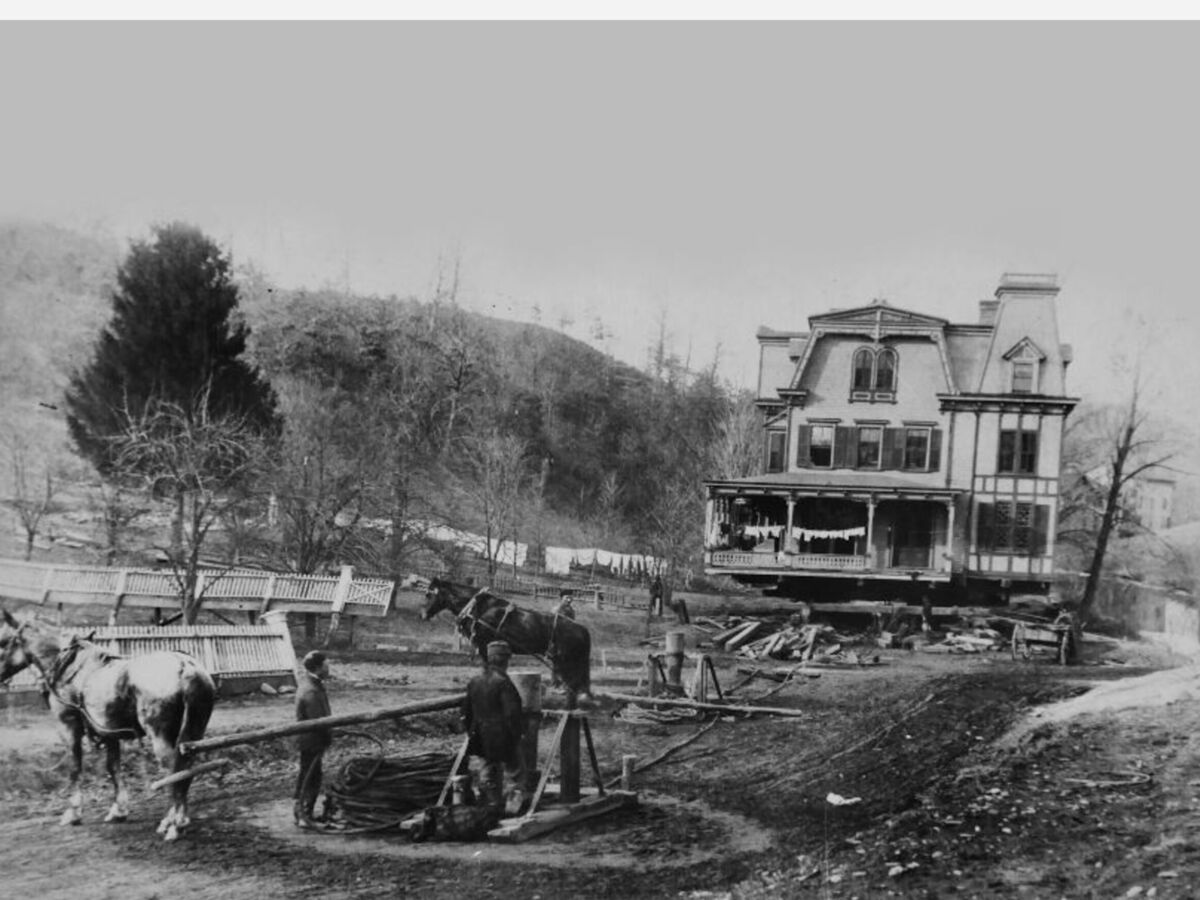Image


“Destruction to Katonah” wailed the headline in the April 8, 1893, New York Times, when rumors were finally confirmed that the hamlet would soon be underwater as part of the plan to quench New York City’s thirst.
“The doom of Katonah is sealed,” The Times predicted, stating that “the picturesque village will be barely more than a memory conjured up in the mind at the sound of its quaint old Indian name.”
The land that held the tiny mill town along the Cross River would eventually become part of the reservoir system in the Croton Watershed.
That dire prophecy of Katonah’s demise, however, was never fulfilled.
Instead of drowning their sorrows, neighbors made the bold decision to pick up and move the entire hamlet — including 55 buildings — across the river and about a mile south of what eventually became known as “Old Katonah.”
The Katonah Land Company composed of wealthy local investors purchased a farm and hired architects to design a “New Katonah,” with streets adhering to a Celtic cross design, according to the Katonah Village Improvement Society.
Residents who lost their homes to eminent domain had a chance to buy them back at auction and have them moved to the new locale. Prices ranged from about $35 to $200 or more, according to Deirdre Courtney-Batson, a Katonah historian who chairs the Bedford Planning Board.
Among the homes that were carted down the road to the new community, some still stand on its streets, where the original layout remains in place at the intersection of Bedford Road and The Parkway.
On Saturday, May 21, Katonah will be celebrating the 125th anniversary of the date (April 5, 1897) when “New Katonah” received its first mail delivery via the New York Central Railroad.
“From that day on, it was clear to all that the hamlet's future lay in the new planned community taking shape on what had been the Ashby farm just a few months earlier,” according to the Katonah Historical Society’s Facebook page.
As part of Saturday’s celebration, Courtney-Batson will be leading walking tours of Katonah, which is an unincorporated hamlet in the Town of Bedford.
“As a historian, anytime you’ve got a good excuse to tell people about the history of the place they live, you should take advantage of it, because there’s nothing that makes people appreciate history in general as much as learning their local history,” Courtney-Batson said. “When you’ve got a community with a history that’s as interesting and in many ways inspiring as Katonah’s, it’s a shame not to celebrate it.”
Standing the test of time
Some three-dozen properties in the hamlet’s residential center, including those that made the trip from the old to the new Katonah, are on the National Historic Register.
Courtney-Batson, an adjunct professor who teaches history at Pace University Pleasantville, lives in one of those original homes. Her family’s Queen Anne-style house on Bedford Road dates from 1880-81 and once served as the Methodist manse in the old hamlet.
Teryn Kendall’s home also made the journey to its current location on The Parkway. Built in 1836, its Italianate Victorian features were restored by a previous owner in the 1980s, said Kendall, a Katonah Improvement Society board member and co-chair of the 125th anniversary celebration committee.
Kendall calls Katonah “a quintessential American town,” with its well-kept homes, village green, and a downtown that mixes longtime fixtures like Kelloggs & Lawrence hardware with upscale boutiques.
The community’s personality also is reflected in the numerous musicians, actors, filmmakers and artists who reside there, and an art stroll will be part of Saturday’s celebration.
“Yes, we are very proud of our history, but I also think we’re proud that we are still thriving today,” Kendall said. “There’s a lot of pride with what we’re doing currently to stay modern and keep our little hamlet thriving.”
Celebrating Katonah at 125
Saturday’s celebration includes a host of activities, including:
Robert Brum is a freelance journalist covering the Hudson Valley. Read more of his work here.